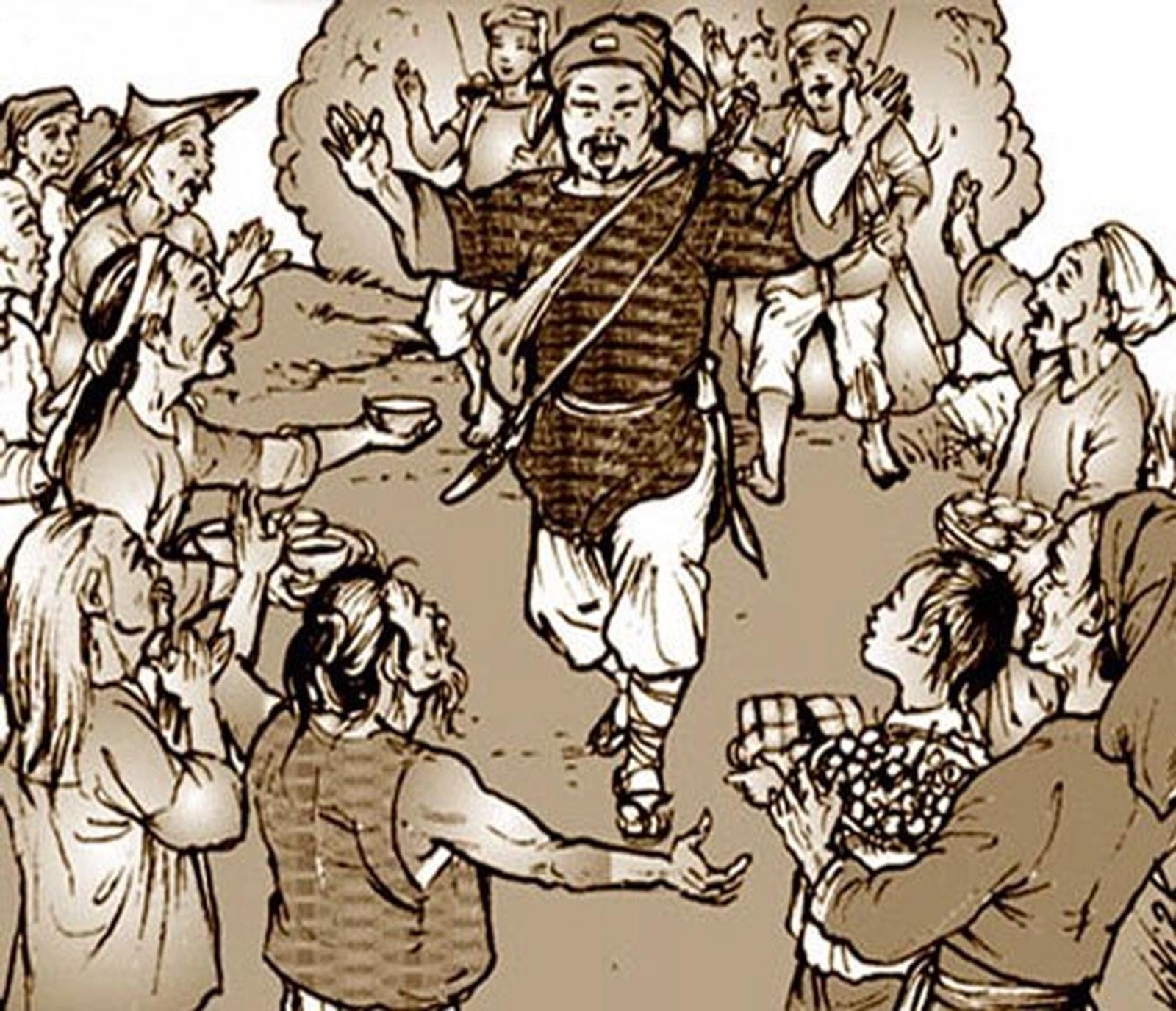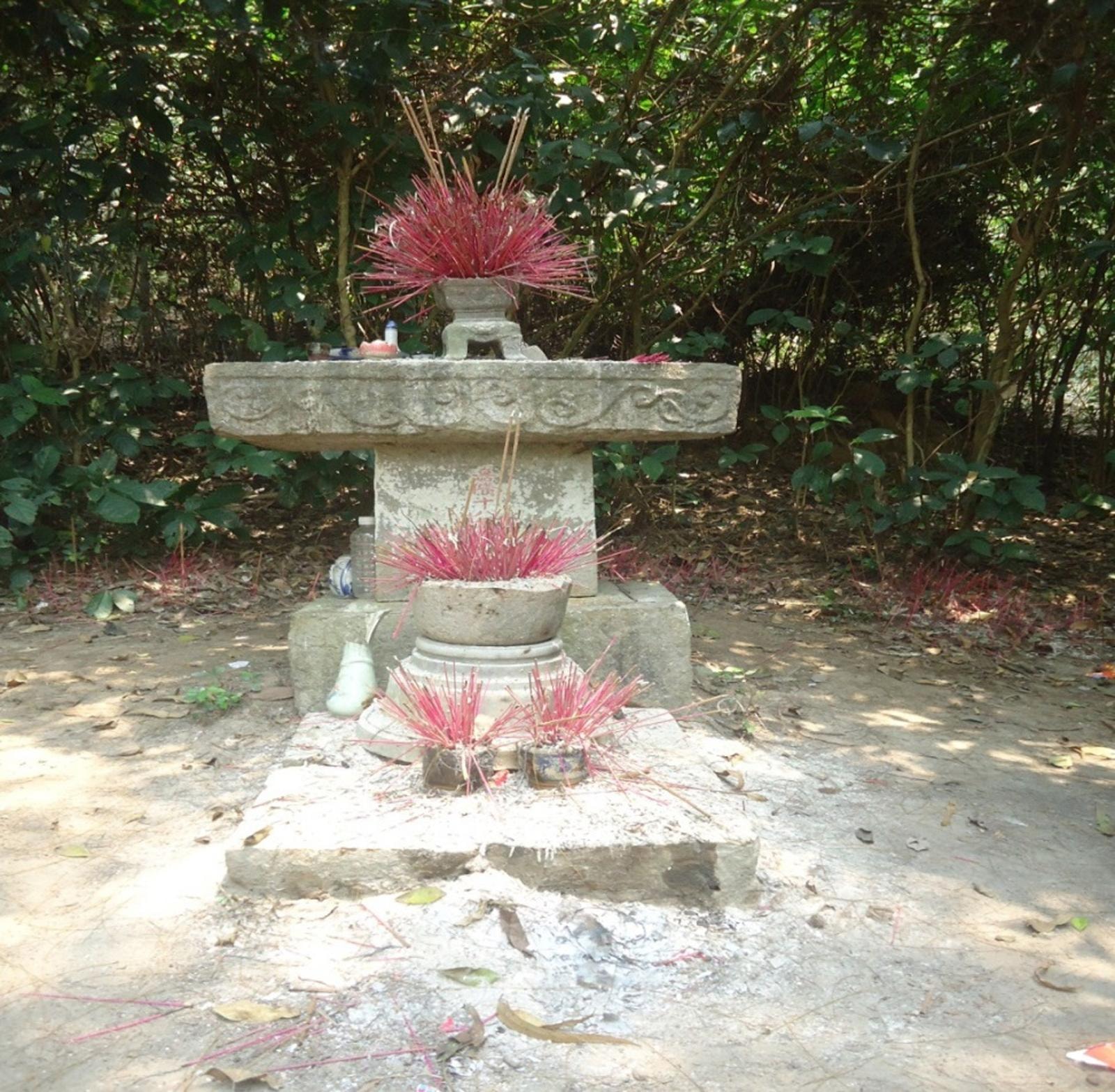The mark of King Phung Hung on Quynh Luu land
(Baonghean.vn) - King Phung Hung is a majestic and sacred historical figure in the minds of the people. In the land of Nghe An, his mark is still deeply imprinted in spiritual life, with many thrilling legends.
Phung Hung was born around the beginning of the 8th century, with the courtesy name Cong Phan, from Duong Lam (now Son Tay district, Hanoi). He was born into a family "whose fathers passed down the title of border chief in Duong Lam district, called Quan Lang, had a wealthy family, and was very strong, able to catch tigers and buffaloes". His father was Phung Hap Khanh, a gentle and virtuous man who had participated inMai Thuc Loan's armyIn Nghe An, his mother was from the Su family. Following his father's footsteps as a tribal chief, Phung Hung not only took care of building his career but also loved the people very much. "During years of crop failure and famine, he often brought rice to help the poor."
 |
Painting of King Phung Hung. Source: Document |
At that time, around the Dai Lich period of the Tang Dynasty (766 - 779), the situation in China was chaotic, the Tang Dynasty entered a period of decline, and generals in many places rose up to form separate factions. The An Nam Protectorate Cao Chinh Binh also took advantage of the opportunity to act arbitrarily, exploiting the people's wealth and imposing very heavy taxes, causing resentment among the people. Faced with that situation, Phung Hung and his younger brother Phung Hai called on the people to rise up in revolt. He was already popular with the people, and now he initiated the uprising, and the people unanimously followed suit, honoring Phung Hung as the Commander-in-Chief and Phung Hai as the Commander-in-Chief.
"Wherever the insurgents went, they were like the wind, the enemy was very scared", the areas around Duong Lam were quickly liberated. Gradually, Phung Hung's insurgents occupied a large area around Phong Chau and built this place as a base to fight the enemy. The Tang army could not suppress them. Taking advantage of this opportunity, Phung Hung followed the plan of General Do Anh Luan (also known as Han) - a chieftain also from Duong Lam "ordered troops to surround the citadel on 6 sides, Chinh Binh had no way to rescue, he would surely die". Cao Chinh Binh brought 40,000 troops to fight, "after 7 days and nights of fighting, the enemy lost the advantage and retreated into the citadel to defend", Cao Chinh Binh was so scared that he fell ill and died. The insurgents captured the citadel. Phung Hung reorganized the government, after 7 years he died. The people honored Phung Hung as Bo Cai Dai Vuong (father and mother king) and built temples to worship him in many places to commemorate his merits.
In Quynh Luu - the land at the head of Nghe An (now Quynh Luu district and Hoang Mai town), in the areas of Van Tu, Quynh Tu (Quynh Van and Quynh Xuan today), there are many places to worship Bo Cai Dai Vuong Phung Hung such asRam Temple in Quynh Van Commune, Quynh Luu district; Phung Hung temple (also known as Quynh Tu temple) in Quynh Xuan ward, Hoang Mai town... with many different legends and versions, but the common point is that they all associate God with this land.
 |
Ram Temple, Quynh Van Commune, Quynh Luu District. |
The legend of Ram Temple (Quynh Van commune, Quynh Luu district) also records in detail the birth of the God as follows:“One day, while working in the field, suddenly a storm came and it rained, dark clouds in the sky covered her. After that, she became pregnant, and on time gave birth to three sons: Phung Hung, Phung Hai, and Phung Dinh.”
There are many legends circulating among the people about why Gods are worshiped in this land. One legend says that: In the past, this area was a dense forest, where wild animals often roamed, greatly affecting the lives and activities of the people living around the area. When he was alive, Phung Hung was famous for his strength, able to fight buffaloes and tigers. People wanted to use his power to control wild animals, so they built a temple to worship him.
Another legend says that during his reign (784 - 791), Phung Hung once led his troops to inspect Hoan Dien, to the area of Ke Ha, Ke Van, Ke Doi... in the Tung Linh mountain area, he saw many wild animals, especially tigers that often preyed on livestock and people, he stopped to kill the tigers. When he and his soldiers were fighting with a tiger, 3 other tigers appeared. After many hours of struggling with 4 tigers, exhausted, he and some soldiers fell down and bled to death. 4 tigers brought his body to the top of Tung Linh mountain.
The people in the ancient Quynh Luu area mostly believe in the second legend. On the top of Tung Linh mountain (in the territory of Quynh Van commune and Quynh Xuan ward), there is still a stone altar (called by the people as a stone altar) which, according to the people, was set up at the place where Phung Hung shed a drop of blood while fighting with a tiger. The existence of the stone altar further strengthens the people's belief that Bo Cai Dai Vuong Phung Hung once appeared in this land. Every year, on January 21, the people in the area solemnly hold a memorial day for the God.
 |
The stone altar is located on the top of Tung Linh mountain. |
Because the stone altar is located on the top of the mountain, worshiping and organizing the death anniversary ceremony encountered many difficulties, so during the Nguyen Dynasty, the people in the area held a ceremony to ask the God to build a temple at the foot of the mountain, using a stone rolled down from the top and making a convention: wherever the stone stopped, the temple would be built there. In this way, the Ram Temple in Quynh Van Commune was built. Currently, the temple still preserves the God's title in Chinese characters, the content is as follows: "Gia tang duc bao trung hung thuong dang than chu ton doi huong Phung Dai Vuong".
After all, worshiping a local god has its reasons, one is related to the locality (birthplace, deathplace, place of bloodshed, place of artifacts... of the god), two is the god is a person from another place but has contributed to the locality or is localized by the people. Because according to the folk concept "Each village beats its own drum/Each village worships its own Saint"... and to have a "Saint of one's own village", one must build for the "Saint" a history associated with "one's own village". Therefore, it is not surprising that a Bo Cai Dai Vuong is very close, and is given a very "specific" history and "undeniable" merit by the people. In this way, Bo Cai Dai Vuong Phung Hung has been attached to the people here from generation to generation, together with the people witnessing the daily changes of the land of Quynh Luu.
References:
1. Complete Annals of Dai Viet, Ngo Sy Lien, Culture and Information Publishing House, 2004.
2. Viet Dien U Linh, Ly Te Xuyen, Hong Bang Publishing House, 2012.
3. Outline of Vietnamese history, volume I, edited by Truong Huu Quynh, Education Publishing House, 1999.
4. God worship customs and legends of Nghe An, Ninh Viet Giao, Nghe An Publishing House, 2000.
5. The miracle of Ram temple, Quynh Van commune, Quynh Luu district.
6. History of Ram Temple relic, Quynh Van commune, Quynh Luu district.
7. History of Phung Hung Temple Relic (Quynh Tu Temple), Quynh Xuan Ward, Hoang Mai Town.

